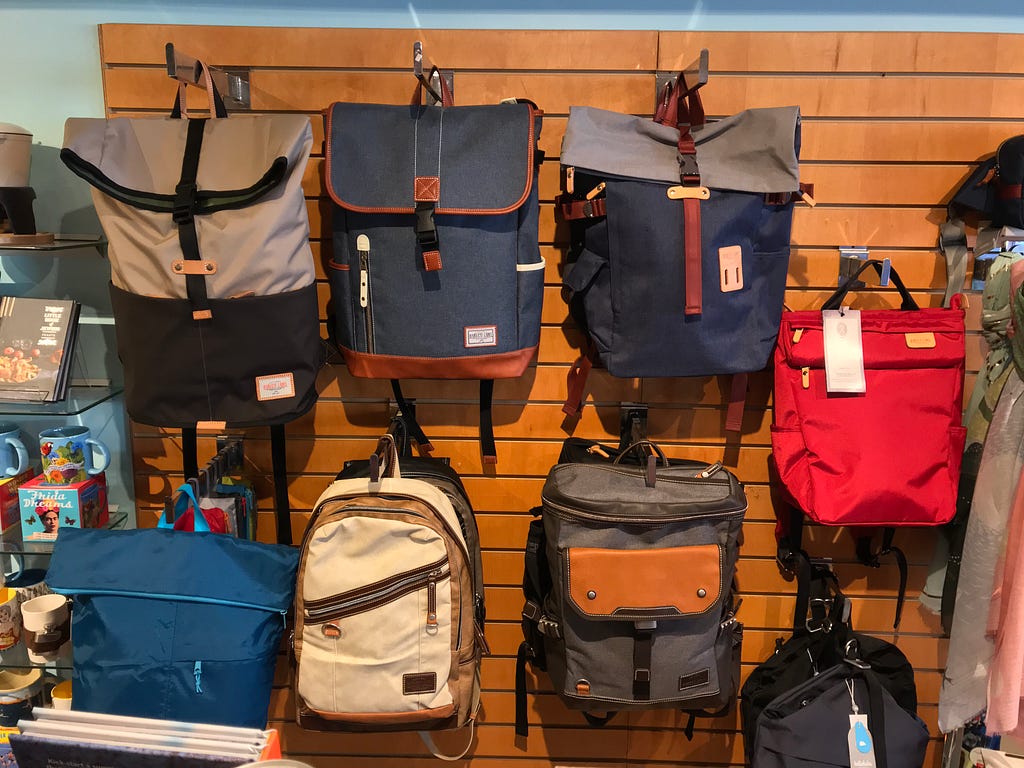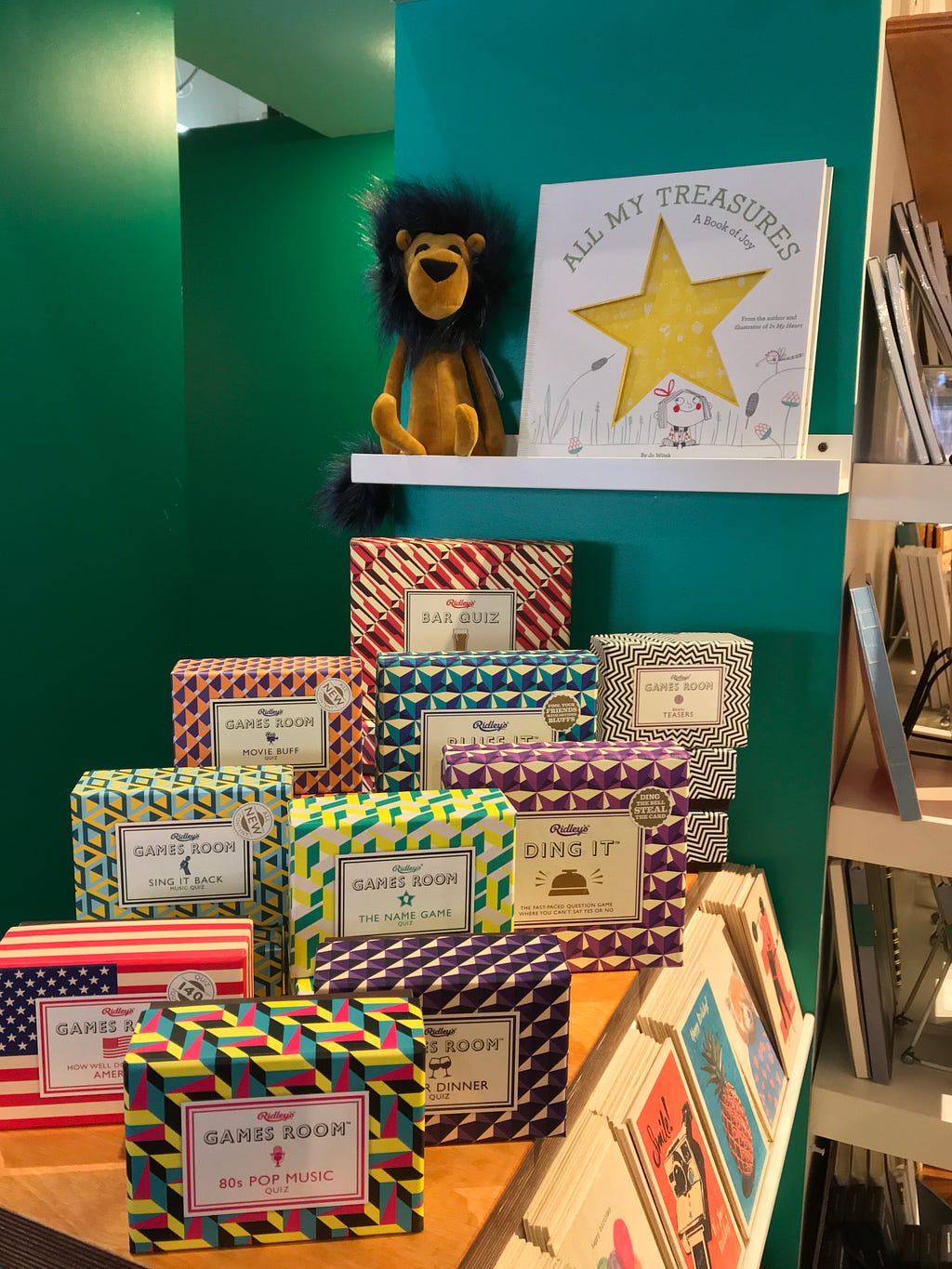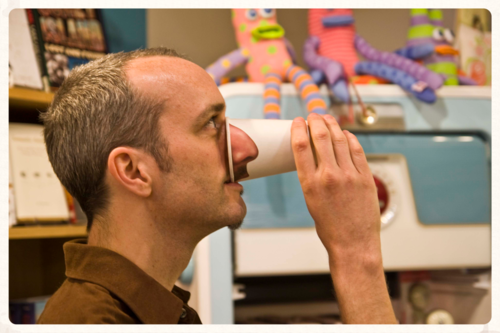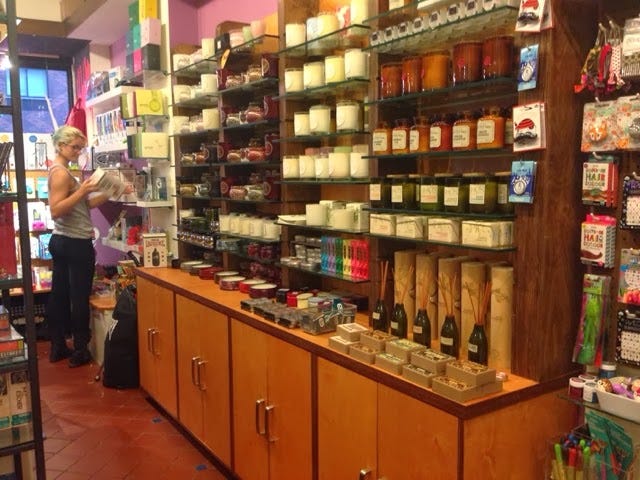Exit9 Owner Nurtures Relationships to Build Business Success


This article is one in a series highlighting the Best for NYC, a growing community of more than 1,500 local businesses focused on improving the lives of their workers. To learn more about the 2019 campaign, visit bestfor.nyc.
By Alice Maggio
Which New York City gift shop got its start in an Ohio farmer’s woodshop? If you guessed Exit9 you would be right! (How did you know that?)
Charles Branstool, owner of Exit9 Gift Emporium, got his start in the gift business while still in college in Ohio, making his own line of products in his father’s woodshop. After landing in New York City, he quickly saw an opportunity to open his own shop near where he was living in the East Village. “There was this vacant storefront, and it was sort of talking to me the whole time,” he explains. “Basically, I just went for it. I was too naive to know that I should be more afraid,” he laughs.

Exit9 was founded in 1995 on Avenue A as “a retail gift store with something for everyone,” as Branstool puts it. He originally planned to make the product for the store but quickly realized that there was no way he could keep up, so he started sourcing the diverse array of items the business now sells. “Exit9 is an impulsive place,” he explains, describing how the store offers items with a price range of $1 to $150, with an emphasis on unique items that cannot be found elsewhere and things that are useful to on-the-go New Yorkers, such as top-quality bags.
In 2007, Branstool opened a second location on Smith Street in Brooklyn, recognizing that Cobble Hill was, similar to the East Village, a walking neighborhood where he could depend on a lot of foot traffic to bring in customers. He acknowledges that the growth of online sales is a challenge for businesses like his, but he thinks that actually “people don’t want to shop online,” postulating that most people are overworked, and that we don’t walk around as much as we used to. He has adapted by creating an online store, but he also says that you can’t re-create the experience of visiting one of the Exit9 locations in person. “I pick products that have a feel,” he says, the ones that have a little bit of “oh wow!”
A large part of the Exit9 formula, Branstool says, is listening to the neighborhood and creating a fun and welcoming environment. Because ultimately, he says, “you want people to come back. That’s the idea, right?” And of course, because Branstool cannot be in both stores all the time, the employees at Exit9 play an important role in reaching that goal. For one thing, he says, they help him select products. “For example, I don’t really know anything about jewelry because I don’t wear it. But some of my staff members do, and so they have a much better sense of what’s trendy, and what will sell.”
“It is expensive to hire new people,” says Branstool, so he encourages people to stay on. To do so, he pays his employees well and seeks to offer attractive benefits. In addition, he notes, “the people who work here should be paid well enough to buy the product that they are selling. That, above all else, should be happening.” According to Branstool’s estimation, even the lowest-paid member of staff still makes about 25% above the minimum wage. Exit9 also offers commuter benefits and monthly bonuses when sales goals are met. At the end of the year, in the place of a monthly bonus, Branstool gives merit-based yearly bonuses to thank those employees who have contributed to the business during the “crunch time” of the holidays. He even pays out compensation for any sick time that his employees have not claimed by the end of December.

Branstool says he is “proud that we pay as well as we do,” but he wishes that he could also offer health insurance but so far has found it cost-prohibitive. Nevertheless, the compensation strategy has paid off by building staff loyalty and morale. Branstool can name employees who have been with the company for years. Fifteen years ago, one employee even stepped up to become a part owner with him.
A few years ago, Branstool took the Best for NYC Challenge, an extensive questionnaire about his business practices, especially relating to the quality of the jobs that his business has created. He found it useful, as it showed him how Exit9 benchmarked against other businesses. It was also thought-provoking, he says. “Simply reading some of the questions really made me think about my business, and what were some of the best practices that I could employ,” he says, and that’s something he did not have when he first opened.
The Best for NYC Challenge has proved most helpful, Branstool says, as he has prepared to launch a new business called Local Line. The new business will be at the Essex Market in the Lower East Side and will offer all locally made goods, including food, personal products, and candles all made in the tri-state area. “I’ve been looking at the whole business development process through the lens of best practices,” says Branstool, who is excited to incorporate what he has learned from all his years in business and the Best for NYC program to this new venture.
“I’ve always been a maker at heart. Once I got the store I became a maker of the business,” Branstool says.
Looking at the evolution of Exit9 he reflects, “It worked, and the neighborhood responded well to us being there. We have really grown up with the neighborhood.” He means that quite literally: “Little kids that used to stumble into my store are now grown up and have kids of their own! We’ve been there long enough that people can’t remember a time when we were not there.”
Exit9 is a member of Best for NYC, an initiative of the New York City Mayor’s Office of Workforce Development in partnership with B Lab. Best for NYC aims to build a shared understanding that businesses can thrive financially while also making decisions that benefit their workers and their community.
B the Change gathers and shares the voices from within the movement of people using business as a force for good and the community of Certified B Corporations. The opinions expressed do not necessarily reflect those of the nonprofit B Lab.

A Gift Shop That Rewards Employees and Delights the Neighborhood was originally published in B the Change on Medium, where people are continuing the conversation by highlighting and responding to this story.